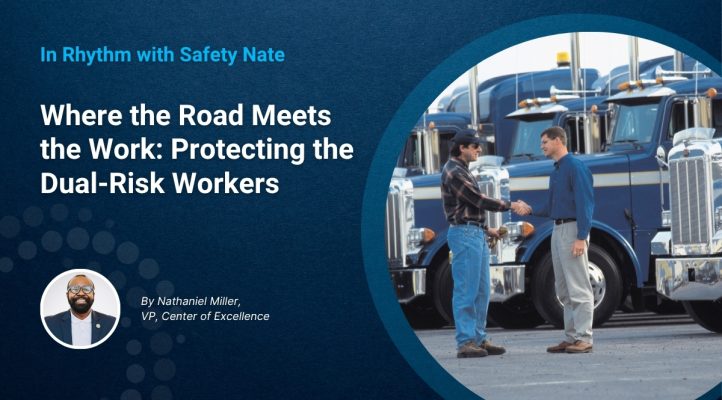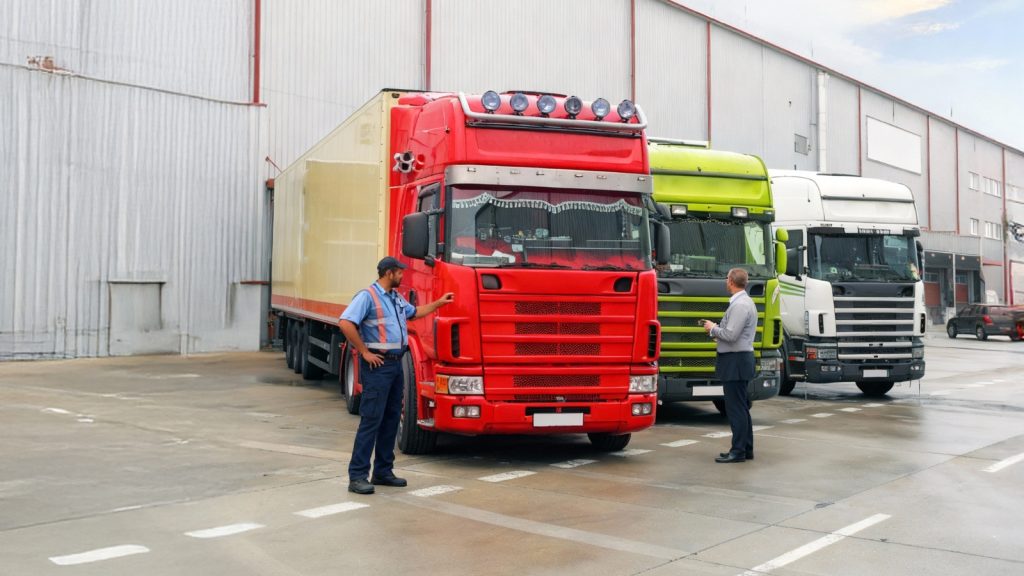Where the Road Meets the Work: Protecting the Dual-Risk Workers

In every industry that depends on people in motion, a new kind of worker is redefining how safety and performance are understood. These are the “Dual-Risk Workers” individuals whose day begins on the road and continues in the field. They face two different exposure environments, but only one body, one mind, and one system of fatigue and focus.
Some organizations still manage those worlds separately: fleet risk in one system, field risk in another. That divide limits visibility, weakens accountability, and makes it harder to protect people before harm occurs. Closing that gap doesn’t require more data or another program, it requires connecting leadership and technology in a shared mission: to see risk as one continuous experience.
The Two Worlds of Risk
Each morning, the cycle repeats.
A driver starts a route, balancing deadlines, weather, and the constant judgment calls that come with being on the road. Hours later, that same worker transitions into the field lifting, climbing, or repairing within an environment filled with physical and environmental hazards.
This is a workday. But operationally, it is often managed as two separate systems: one owned by fleet safety, another by field operations. This split is understandable; it grew out of specialization and legacy design. But as the nature of work evolves, so must our understanding of how risk moves with people not just within job functions, but across them.
A driver who leaves the yard fatigued may step into a high hazard task hours later with limited focus. A field operator who works extended hours may face heightened road risk driving home. The data may live in separate databases, but the person and the exposure are one.
Connecting What the Worker Already Knows
Workers have always understood this continuity; our systems often have not.
They know the day doesn’t reset when the truck is parked; it simply changes form. The real challenge for leadership is to recognize what they already experience: that safety doesn’t begin or end with a shift, a job code, or a task. It travels with the person. That’s where leadership and technology meet.
When digital systems connect telematics, scheduling, job safety analysis, and field activity data into a single view, patterns emerge that once lived below the surface fatigue aligning with minor injuries, near misses linked to route duration, productivity gains tied to risk maturity.
This is not about replacing judgment with analytics it’s about giving judgment a better context. Technology amplifies awareness; leadership turns that awareness into action.

Leadership and Technology as Equal Partners
Technology alone cannot create a culture of safety. But leadership without technology cannot keep pace with the complexity of modern work. The future belongs to organizations that unite the two.
Digital intelligence systems can capture trends, detect anomalies, and connect information across functions faster than any human could. But they require leaders who understand how to translate that information into decisions that build trust, not fatigue. A modern safety strategy recognizes that leadership defines the questions, and technology helps find the answers. Together, they turn data into direction.
When supervisors receive real time insights linking driver fatigue with field workload, they can adjust schedules before risks compound. When executives see injury patterns aligned with operational delays, they can intervene at the system level, not the symptom level. That is precision leadership protecting people and performance at the same time.
Designing for Connection, Not Separation
Protecting dual-risk workers means rethinking how work is designed and measured. It means viewing every route, shift, and task as part of one connected ecosystem where information, fatigue, and risk move through time together.
The goal is not to separate the parts, but to understand their relationship. When organizations begin to see risk as a shared flow between the road and the worksite, they discover that safety isn’t a static outcome; it’s a living process.
That process strengthens when leaders and technology stay aligned when insights are not only collected, but communicated, and when decisions are made with the full story of the worker’s day in view.
The Future of Safety Leadership
The companies that will define the next decade are those that connect human intelligence and digital intelligence into one system of protection and performance. They will stop viewing technology as a reporting tool and start using it as a decision companion, something that helps leaders see patterns earlier, act faster, and sustain accountability across operations.
At the same time, they will never lose sight of the human center, the worker who carries both responsibility and the risk. When leadership and technology move in rhythm, the organization becomes more capable, not just compliant. Safety becomes how businesses think, not what it reacts to.
Closing Reflection
Every person who drives and works in the same day carries a full spectrum of exposure. They don’t live in silos, and our systems shouldn’t either.
Protecting them requires more than good intentions; it requires connection: between data and decision, between road and field, between leadership and technology. Because the moment those elements come together, something powerful happens safety stops being a burden and starts becoming a competitive strength.
That’s where the next generation of leaders will stand at the point where the road meets the work, and where people, systems, and technology move together toward a stronger, safer tomorrow.
To learn how Rhythm innovations can help you better manage your dual-risk workforce schedule time with our team, click here.
To hear more from Safety Nate, Vice President, Center of Excellence – Rhythm Innovations, join our upcoming webinar Protecting Dual-Risk Workers: Integrating Fleet and Field Safety Intelligence on November 20, 2025, from 2:00 PM – 3:00 PM ET.




